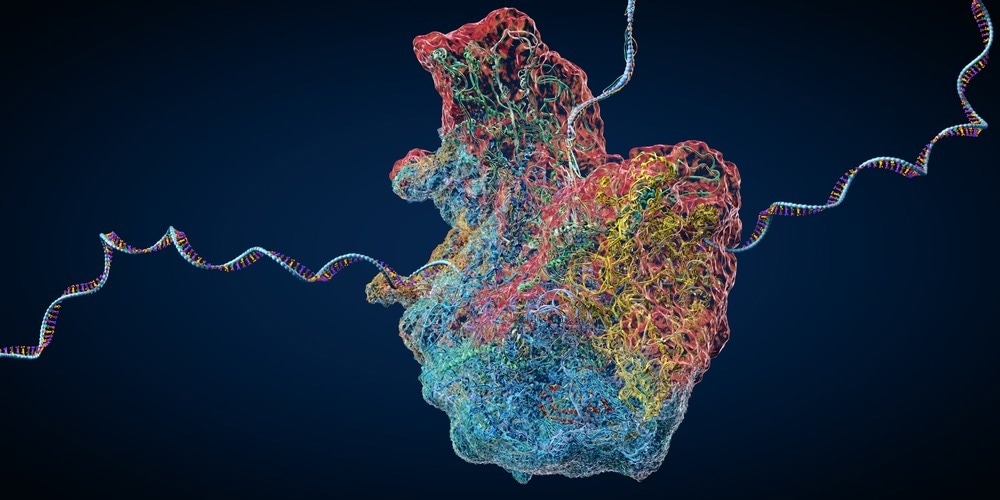Ribosome profiling, a gene sequencing approach, has increased the understanding of the human genome by uncovering previously undiscovered protein-coding regions.

Image Credit: Christoph Burgstedt/Shutterstock.com
This technology, also known as Ribo-seq, allows researchers to obtain a high-resolution image of protein production in cells.
Ribo-seq has the potential to revolutionize cancer research, yet many of the findings made possible by Ribo-seq offer an unconventional perspective on where and how protein production occurs.
As a result, scientists must first confirm that these areas code for proteins.
A Tool for Cancer Research
Ribo-seq has garnered major interest for use in studying protein production in cancer cells to identify a specific abnormal protein as targets for immunotherapy or other treatment approaches.”
John Prensner, M.D., Ph.D., Assistant Professor, Departments of Pediatrics and Biological Chemistry, University of Michigan Medical School
Immunotherapy treatment stimulates the patient’s immune system, causing cancer cells to be destroyed. It does not have the harmful side effects of chemotherapy, such as nausea, vomiting, and hair loss, making it an extremely attractive treatment for those who meet the criteria.
Immunotherapy is currently only accessible for specific malignancies. Tumors that generate a high number of proteins with clearly detectable mutations are compatible with immunotherapy.
Drugs that target such proteins have been developed to activate the immune system against malignant cells. Scientists want to employ Ribo-seq to better understand the proteins produced by cancer cells, allowing immunotherapy to benefit a broader proportion of cancer patients.
Investigating Protein Machines
A protein is created in two steps: transcription and translation. Ribo-seq focuses on the second stage of translation. During transcription, the cell copies the genetic instructions known as messenger RNA or mRNA from the DNA master blueprint. The messenger RNA is subsequently sent to a ribosome, a small protein factory within the cell, to begin the translation process.
The instructions to combine amino acids to generate proteins are translated by the ribosome. According to Prensner, scientists have previously utilized RNA sequencing, also known as RNA-seq, to pinpoint the genes that are activated to produce proteins in a specific tissue sample. For instance, RNA-seq could be used to determine which genes a cancer cell uses to produce proteins and to spot any changes in the proteins themselves.
RNA-seq serves as a stand-in for the translation process, although the findings can be affected by a variety of circumstances. The translation process is analyzed using ribo-seq, which provides a clearer view of the pace and location of translation.
Collaboration to Improve Databases
To make any sense of the lengthy list of letters returned by any genetic sequencing, scientists must first align the sequence to a reference genome. Reference genomes are a digital resource that contains a recognized representation of a gene’s sequence in an organism.
A reference sequence of the human genome would be used as a standard comparison to the gene sequence created in research to learn more about function if a scientist were investigating the cancer biology in the human genome. The ability of human genome reference databases to identify Ribo-seq findings is currently limited. The absence of standardization prevents the employment of ribo-seq in the world of research.
To address this, Prensner’s lab, which studies the molecular underpinnings of pediatric brain tumors, collaborated with an international group of researchers to launch a project to develop human genome reference databases for Ribo-Seq usage.
During Phase I of the project, this collaboration of research groups created a standardized database of 7,264 Ribo-seq Open Reading Frames—spans of DNA fragments that code for proteins—that is now publicly available to scientists all around the world.
Although an excellent starting point, this catalog deserves more examination to address a fundamental issue for the research community: how many of these Open Reading Frames actually make a protein product?
Cross-Checking Results
Prensner spearheaded a research effort to merge Ribo-Seq and proteomics techniques, which are laboratory procedures used to validate the existence of a protein within a cell, to boost researchers’ confidence in the ability of these Ribo-Seq Open Reading Frames to generate proteins. The findings were reported in the journal Molecular & Cellular Proteomics.
The study team suggests a paradigm for standardizing evidence levels for these newly discovered protein-coding areas. Classifications range from “protein candidate” with the most evidence necessary to “detected” with the least evidence required.
Presner added, “We believe this common terminology and shared database resources will reduce confusion and improve the precision of research on these Open Reading Frames identified by Ribo-Seq.”
For years to come, improved databases will facilitate more accurate gene sequencing interpretations and stimulate breakthroughs in cancer as well as throughout other parts of human biology.
Source:
Journal reference:
Presner, J. R., et al. (2023). What Can Ribo-Seq, Immunopeptidomics, and Proteomics Tell Us About the Noncanonical Proteome? Molecular & Cellular Proteomics. doi.org/10.1016/j.mcpro.2023.100631